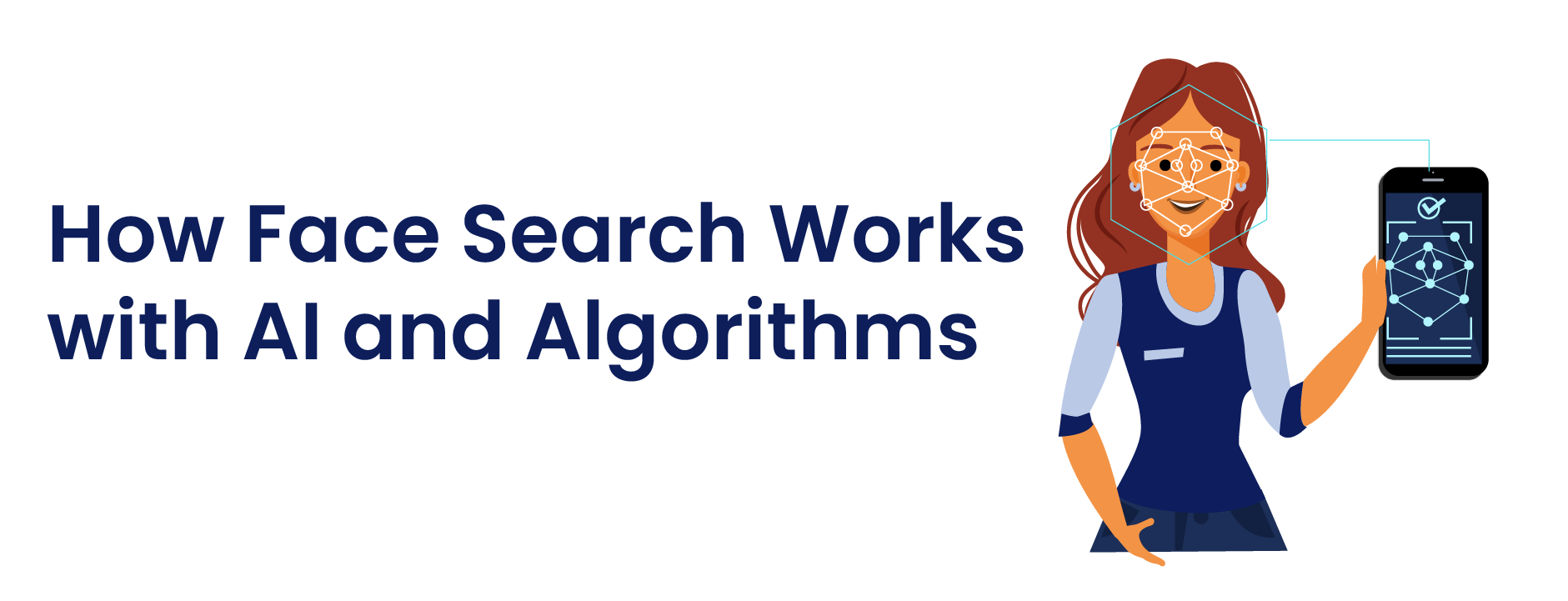Ever thought of how surveillance cameras in airports work to identify scammers and thieves? This technology has been around since the 19th century, and since then, it has helped in catching fraudsters and thieves.
If you think there are no AI algorithms working behind this face search technology, then you are not wrong. Face search works on many powerful algorithms and AI technologies, which we are going to explore in this article.
Here, we will talk about how face search works with the help of AI and different algorithms. Read till the end to learn more!
What is Face Search?
Face search is a powerful technology that works to scan people’s faces and find similar images and pictures on the internet. It is commonly used for security purposes in airports, train stations, offices, and more.
You can also use this technology to search for people online and find whether they are real or scammers. For this, you need an online tool, such as Face Search Engine or Google Images, which are available for free.
Algorithms & AI Technologies Work in Face Search
Now that you have learned about what face search is, let’s talk about some technologies and AI algorithms that work in face search to find a person online.
HAAR-Cascades Algorithms
It’s a very powerful AI-trained algorithm that works to identify and detect faces in the picture. If someone uploads a picture with no face or half face, this algorithm will analyze and show that there’s no face.
But if there is a face in the image, then the request will be moved towards the HOG algorithms.
HOG Algorithms
The function of HOG, aka Histogram of Oriented Gradients, is to analyze the facial features. It will understand the face shape, face length, and width, and other primary features. For instance, it will recognize the shape and size of eyes, nose, ears, eyebrows, lips, cheeks, forehead, and chin. Then it will convert them into the geometrical order for measuring and comparing them with other images in the database.
SVM Technology
The final algorithm that works to identify similar faces is SVM (Support Vector Machine). It is a supervised machine learning (ML) algorithm that makes use of all the facial features and analyzes the face in the database of the index images. It then finds the most matching results and displays them for you. For instance, if you use Face Search Engine, then you will not only get the images but also the source links where those images are present on the internet.
How Face Search Works to Identify a Face?
As we have already discussed, the AI algorithms work to do a face search. Here’s the complete explanation of how this process works:
Face Detection
The working of the face search is simple and straightforward. Since they utilize different AI algorithms, they first start by detecting the face in the image. If there’s a face, it will then identify its facial patterns. But if there’s none, then the tool will ask you to upload a picture with a clear and visible face.
Face Analysis
After detection, it starts analyzing the face patterns and converts everything into geometrical order. It understands the size and shape of different face features, including eyes, eyebrows, nose, ears, lips, cheeks, and forehead. After creating a complete report in mathematical order, it will forward the request to the next procedure, where they will create a faceprint of the image.
Faceprint Creation
Since they have already got the image of the face, they can’t directly scan and find similar face images with it. In order to do a smooth analysis, face search creates a faceprint in a digitalized format that computers can easily understand and analyze. That way, it becomes possible for tools like Face Search Engine or Google Images to search and filter images from their extensive database.
Database Comparison
Finally, the tools then compare that blueprint of the face with the database of the index images. Google Images has a database of around 136 billion (or more) index images. On the other hand, Face Search Engine utilizes the API of multiple search engines, including Google, Bing, Yandex, and DuckDuckGo, to find images over different SEs.
After that, it provides the results that include similar images of the person whose image you provided. This is a great technique to identify scammers, find who is catfishing you, and recognize where your images are being utilized.
Conclusion
In the above article, we explored how face search works with the help of AI algorithms and technologies. We discussed methods like HAAR-Cascades, HOG, and SVM, and explained how they detect, analyze, and compare facial features to create a unique faceprint. We also covered the step-by-step process from detection to database comparison that makes this technology so powerful. With these insights, you now understand how face search identifies people online and helps enhance security, trust, and identity verification.
